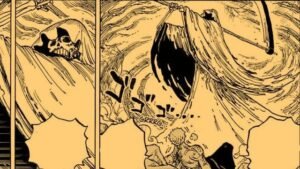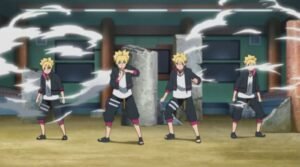
Revealing the mystery of Ninja, the assassination squad that terrifies many people 1
Origin of a legend
The exact origins of the ninja are debated, but in Japan, it is generally accepted that they originated in remote rural areas, from a conflict for supremacy between two neighboring clans, the Koga and the Iga.
Their persistent conflict was unusual in its methods of fighting, focusing on stratagems, deception, ambushes, and stealthy infiltration, rather than physical combat.
Four centuries later, Japan fell into a deadlock as a result of the “warring states period” (Sengoku).
That’s why British historian Stephen Turnbull, an expert on Japanese military history and the samurai period, deduced that ninja came from Japan’s lower class.
When thinking about a ninja, people often imagine a man dressed in black from head to toe, wearing a cloth mask that leaves only his eyes exposed.
The classic ninja has a head covering and a loose-fitting outfit for easy movement.
Even the word ninja is not traditionally used by the Japanese.
Other names used as shinobi are monomi – “one who sees”, Iga mono – “the one from Iga”, nokizaru – “monkey on the roof”, and rappa – “ruffian”.
Exit demons and enter gods

Often famous for extraordinary abilities such as walking on water, ascending to heaven, and water dipping, but in reality, ninjas are not superheroes, but they are methodically trained.
Ninjas were trained in guerrilla warfare strategies, known as ninpō, or more commonly ninjutsu, which involved unique tactics such as codebreaking, espionage, reconnaissance, and camouflage.
Sometimes they also take on the role of secret assassins, so these warriors are required to be agile and have good physical strength to face any situation they encounter.
In training, they are required to contract their bodies into any position, from jumping over gaps to climbing to heights, so mastering acrobatics is very important.
There is a misconception that ninjutsu is a martial art.
However, Igaryu’s Ninja Museum notes that, “The person who uses ninjutsu is a ninja.
Faded into history
Three major battles can be used to illustrate what brought about the end of the ninja era.
After events such as the battle of Okehazama mentioned above, the role of ninjas emerged, causing some military forces to worry.
Along with other Iga warriors, 4,000 ninjas tried to defend the fortress.
After years of civil war, Japan finally came close to unification in the 1630s. The shogun at the time, Tokugawa Iemitsu, pledged to create a peaceful, unified Japan.
The rebels were made up of those who opposed Tokugawa Iemitsu’s anti-Christian edicts.
This victory was the last major conflict, breaking down the obstacles to a unified Japan.
According to Historicmysteries



